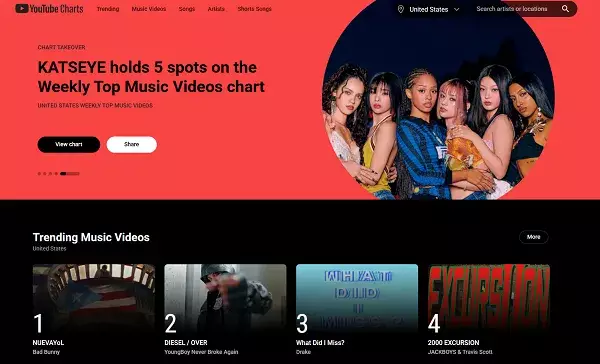For years, YouTube’s “Trending” pages served as a digital pulse, offering viewers a snapshot of the most viral content sweeping across the platform. It was an iconic feature that captured the zeitgeist and provided quick access to popular videos. However, as user behaviors evolve in the digital age, what once worked no longer hits the mark. The platform’s decision to phase out these broad, uniform trending lists signifies more than just a superficial update—it reflects a fundamental shift in how content is consumed, discovered, and appreciated. In a landscape saturated with micro-trends and niche communities, a singular trending feed can no longer encapsulate the diversity of online interests.
This transition is not merely about aesthetics or interface redesigns; it’s a strategic move emphasizing relevance over popularity. Instead of showcasing a handful of viral videos that appeal to the masses, YouTube is now prioritizing tailored, category-specific charts—like music, movies, or podcasts—that resonate more deeply with individual viewer preferences. This change underscores a recognition that modern users crave personalized experiences, seeking content aligned with their unique tastes rather than a generic rundown of mainstream hits.
The Shift Towards Niche and Vertical Content Discovery
YouTube’s new approach heralds a broader narrative about the nature of content discovery in the digital ecosystem. In the past, the platform’s “Trending” page was a one-size-fits-all. Now, by focusing on vertical categories, YouTube is fostering a more intimate and efficient discovery process. It empowers creators and niche communities by giving them dedicated visibility within specific segments. For example, viewers interested in indie music can now find curated charts, while gaming fans can explore dedicated Explore pages. This acknowledges the fragmentation of digital audiences and leverages this complexity, turning it into an advantage.
However, this raises crucial questions regarding the future of viral phenomena. Will these categories foster micro-trends that evolve rapidly within communities, or will they silo users into narrow content bubbles? While some may view this as limiting, the reality is that these focused charts can catalyze more meaningful engagement. Instead of fleeting viral hits, viewers are encouraged to delve deeper into their passions, building sustained connections with content creators and topics they genuinely care about.
Algorithmic Evolution and the Power of Personalization
Perhaps the most profound aspect of YouTube’s transformation is its emphasis on personalized algorithmic recommendations. The platform’s machine learning models already curate content tailored to individual interests, and the new system enhances this by offering broader, more refined lists based on categories rather than a single trending feed. This shift is strategic: it nudges users toward discovering content in a way that feels organic, rather than overwhelming them with viral snippets they may have already seen elsewhere or lose interest in quickly.
Furthermore, the move away from prominent trending alerts toward algorithm-driven suggestions aligns with user engagement patterns. Modern viewers prefer to organically find new content through familiar channels—subscriptions, Shorts, comments, and personalized feeds—rather than being driven by in-app lists. This natural discovery process results in longer viewing sessions and deeper engagement, which benefits content creators in the long run.
Yet, this raises a potential concern: could the removal of the prominent trending page diminish the visibility of breaking viral moments or lead to a more fragmented platform experience? While this is a valid worry, one might argue that in the quest for personalized relevance, YouTube is consciously prioritizing quality and sustained interest over fleeting popularity. The platform appears to trust its algorithms to surface trending content in a manner that aligns more closely with individual user habits.
Implications for Content Creators and Consumers
For creators, this shift means redefining how they reach audiences. Instead of relying solely on trending lists for visibility, content creators must now focus on optimizing within specific categories and fostering community engagement within niches. Building consistent, loyal audiences in particular verticals may prove more fruitful than chasing fleeting viral moments on a broad trending page.
On the consumer side, this transition could be a double-edged sword. While it offers more tailored and relevant content discovery, it might also make the platform feel less lively or dynamic. The iconic “Trending” banner had a sense of collective excitement—something to share and discuss. Removing it might diminish the platform’s role as a cultural hub for spontaneous virality but simultaneously deepen its role as a personalized content portal.
YouTube’s decision to overhaul its discovery algorithms marks a strategic acknowledgment of a changing digital landscape. Emphasizing niche categories and personalized recommendations over broad trending lists aligns with modern consumption habits—favoring relevance, depth, and tailored engagement. While some may mourn the loss of its iconic trending features, the evolution pushes both creators and viewers toward a more nuanced, sustainable, and meaningful relationship with the platform.

